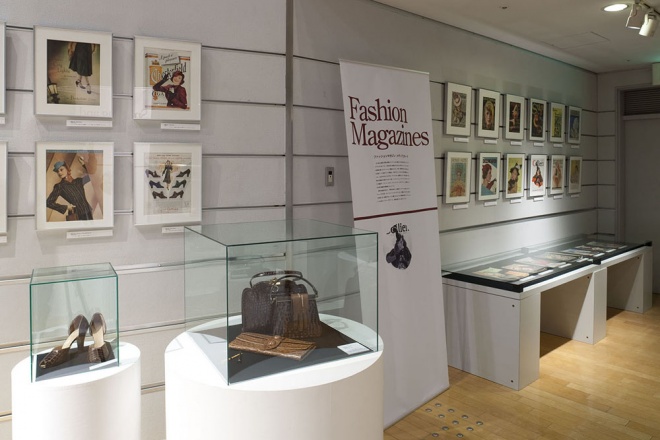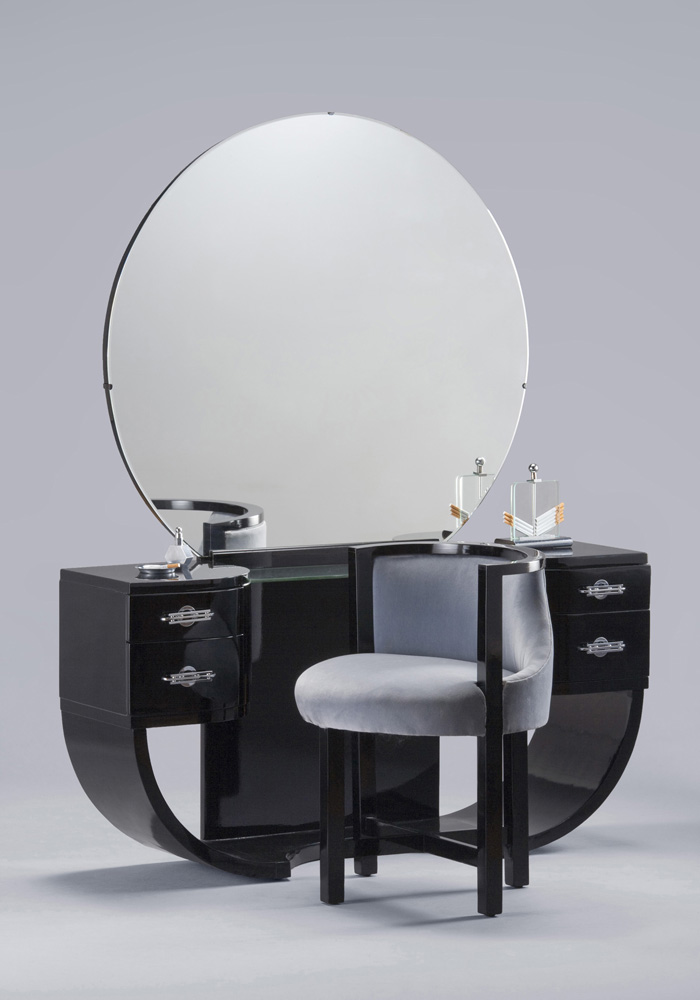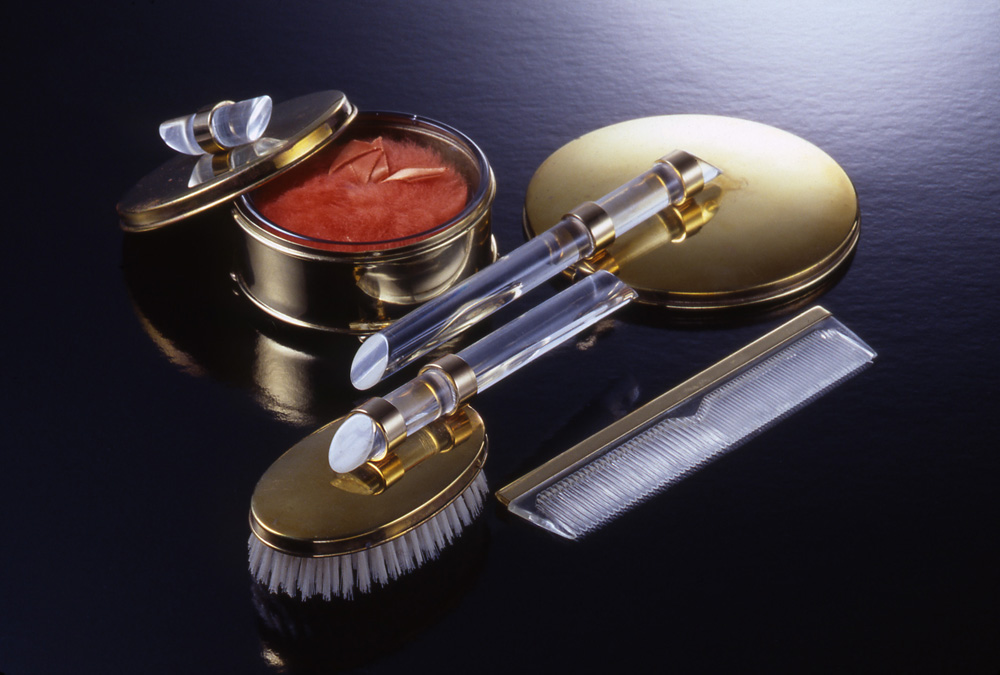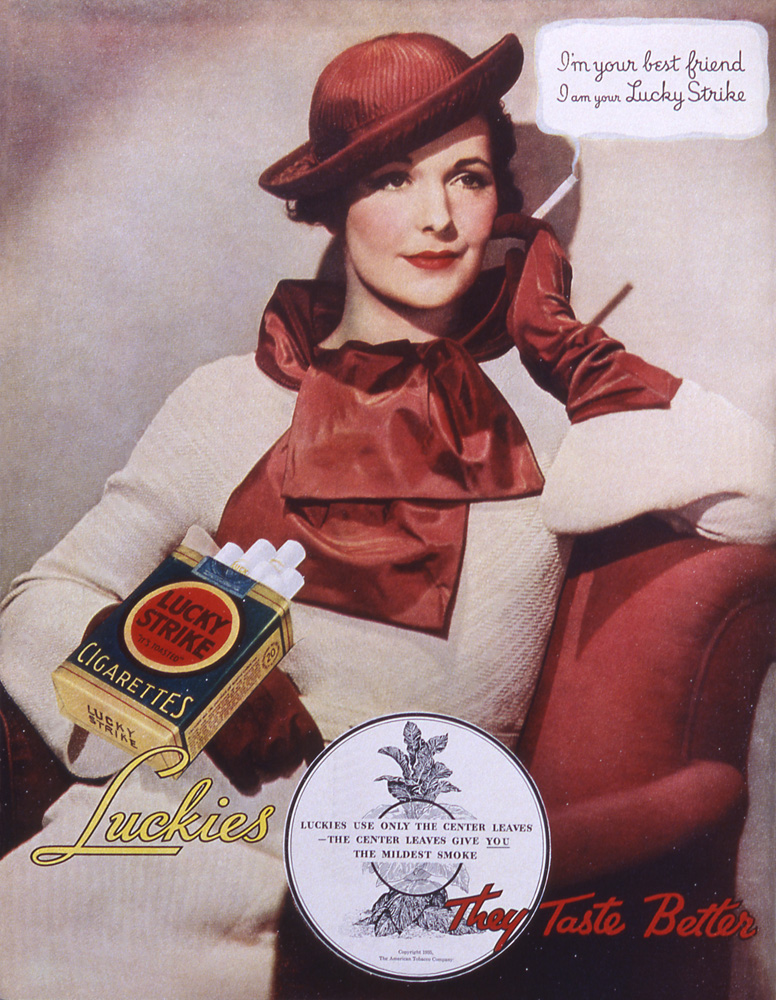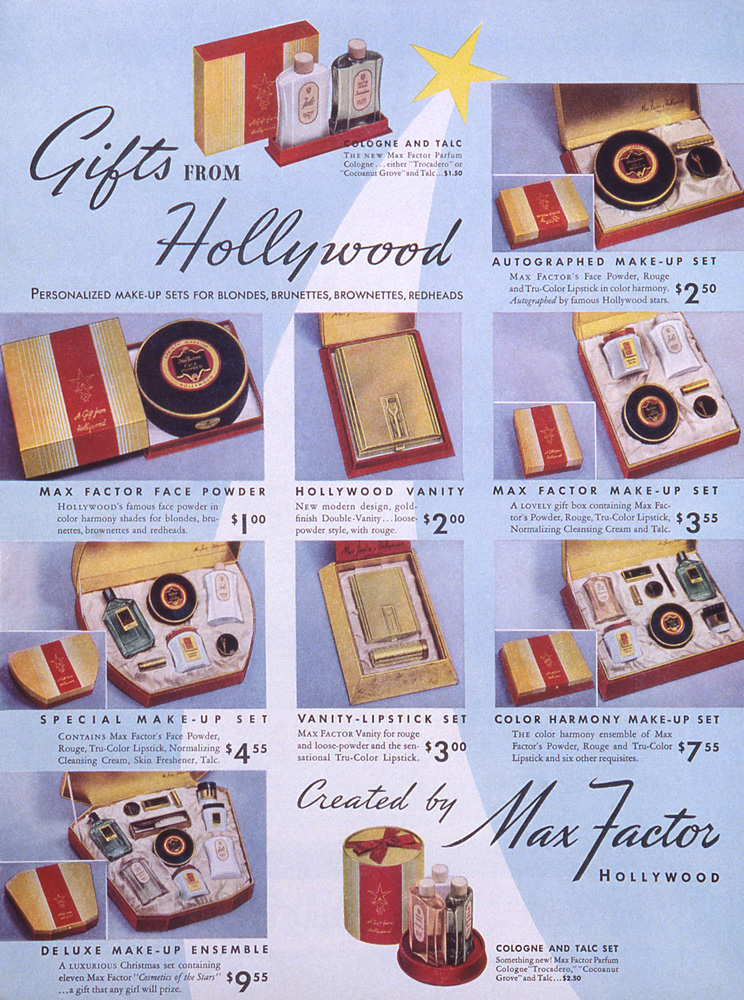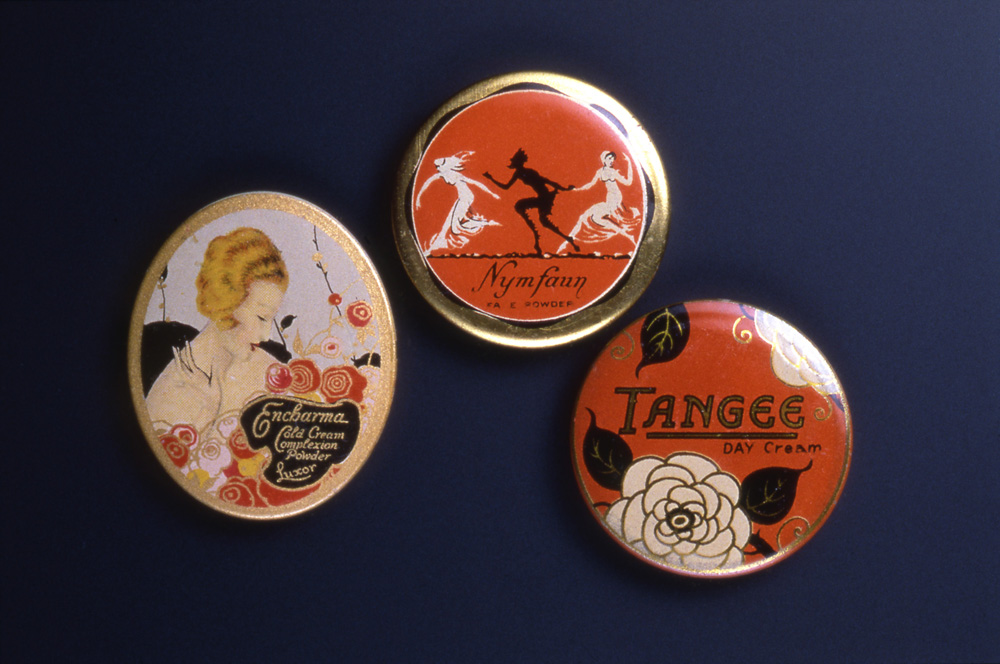- home>
- reports>
- american art deco collection>
- Modern Ladies | America: The Dawn of the Beauty Business
| 2014.05.03 |
|
Collection Exhibition Series Vol.16
Modern Ladies | America: The Dawn of the Beauty Business
At the beginning of the 20th Century, women’s lifestyles underwent a sea change, effected by modernization and two great wars. Between the 1910s and the 1920s in Europe and the United States, with the increase of the number of educated women and the rise of the suffrage movement, there was a call for female independence. In 1920, the U.S. constitution was revised, and women, finally allowed the right to vote, completely discarded their constricting corsets, fled the home and entered society as working girls. Among them appeared young, pleasure-seeking women known as flappers. The audacious behavior of women who discarded conventional notions of femininity, wearing short haircuts and heavy makeup and exhibiting no aversion to drinking and smoking, dealt a great shock to society. Not confined to Europe or the United States, the moga [ modern girl ] trend, with its cutting-edge fashion and style focused on women, also swept our country in the Taisho period [ 1912-1926 ].
In the 1920s, the focus of fashion came from France, spread to the economically developed United States, then rose into widespread prominence through movies and show business, centered in Hollywood. Of the times were the platinum blonde Jean Harlow, with her thin eyebrows, and Marlene Dietrich, who gained fame as a leading actress with her almost medieval charms and melancholy expression. During this period, beautiful women wore the latest fashions on the big screen, and using makeup, created a beauty far from realistic. It was as yet unusual for ordinary women to use makeup on a daily basis, and stage makeup was limited as well. However, in 1914, Max Factor, who came from the world of makeup for ballet troupes, developed makeup in a tube, to rave reviews from the stars. His was the first generation to do so. Great numbers of performers and actresses, who up until that point had used for makeup vegetable oil mixed with flour and other substances, praised Factor’s inventions and put their trust in the products he developed. In 1937, he released a foundation makeup known as pancake makeup that did not smear or run. This product spread not only among Hollywood stars but won widespread support from the general female public worldwide, making product history.
The women of this period naturally followed Paris fashion, but also were continually discovering the latest clothing, hair and makeup styles as presented in Hollywood movies, and following the trends. The expanding realm of activity enjoyed by women, who went to the office daily in suits and hats, led to the dawn of a new consumer market, for dresses and party bags for special occasions, as well as for compacts and lipsticks allowing them to carry their cosmetics anywhere. In the United States, where economic development led to the spread of the cosmetics culture throughout the general public, women of every class became target audiences for the beauty business. Particularly after the Great Depression that began in 1929, when the rich and powerful lost their special privileges with the loss of manufacturing, the middle class became the proprietors of culture.
Among the important information sources for women at this time were movies and rapidly developing media and magazines. After the 1910s, a magazine industry that had grown quickly with developments in printing techniques and advertising revenues was producing a great number of publications full of information and advertising, from high-class business magazines to entertainment magazines for the masses. Among those targeting women were Ladies Home Journal, Delineator and McCalls, along with a great number of fashion magazines that regularly changed their targets and themes. Running the latest fashions coupled with beautiful covers, these magazines must have fascinated the women of the time.
■Exhibits
Delineator (Cover page)/Issue: March 1931 (Left)
Dresser and Stool/Manufacturer: Herman Miller Co./Era: Mid-1930s (Right)
Dresser Set/Manufacturer: Pacifica/Era: Latter 1930s
Compact/Era: Mid-1930 (Left)
Wall Calendar/Printer: Printz-Biederman Co./Year: 1937 (Right)
Magazine Advertising “Luckies Strike”/Publication: Companion/Era: Mid-1930s (Left)
Magazine Advertising “Max Factor”/Publication: LIFE/Year: 1938 (Right)
Cream Case and Powder Compact Case/Era: Early 1930s – Mid-1930s
The Saturday Evening Post (Cover page)/Issue: May 20 1939 (Left)
Magazine Advertising “Guerlain Lipstick”/Publication: Unknown/Year: 1938 (Right)
Design Museum Collection Exhibition Series Vol.16
Modern Ladies | America: The Dawn of the Beauty Business
We exhibited and introduced about 150 items, including the fashions, makeup, accessories, magazines and magazine advertisements from the 1920’s and 30’s that surrounded the American woman of the era, exhibiting and introducing both the free and fashionable feeling of the times and the relevant artifacts.
Period: March 30 – May 15, 2011
Venue: Design Museum
, International Design Center NAGOYA
Organizer: International Design Center NAGOYA Inc.
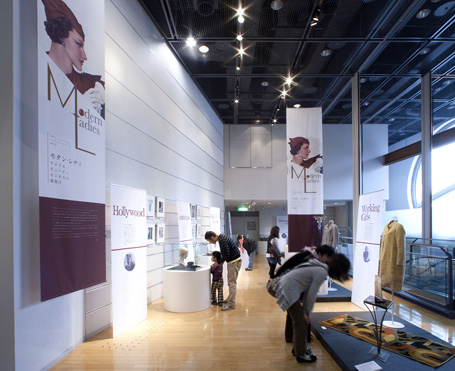
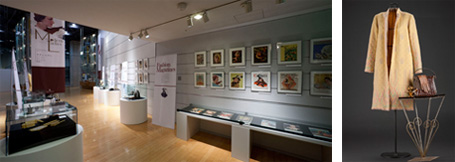
- Report: Nagoya, UNESCO City of Design Promotion Projects FY 2013
- Report: creators shop Loop(Fourth and Fifth Session)
- Report: 2013 Nagoya City Emergency Job Creation Projects
Creative Industry Cooperative Promotion Projects - Report: Corporate Support・Design Planning and Production FY 2013
- Report: IdcN Design Promotion FY 2013
- Report|Design Tour: Fun with the Classics at Yokiso’s Choshokaku
- Electric Media: The Age of Radio
- Ziggurat Design 30s “American Art Deco and Skyscrapers”
- “LIFE” | America: Birth of Photojournalism Magazine
- American AD of 1930s | Lifestyle and Products
- Electric Dream: Household Electric Appliance and Modern Life
- Posters from the 30s: Modern Life and Graphic Design



